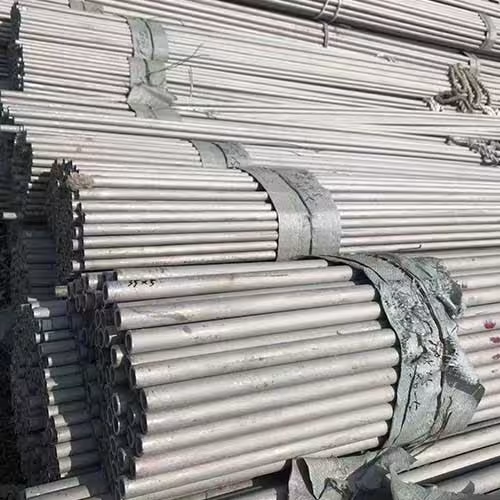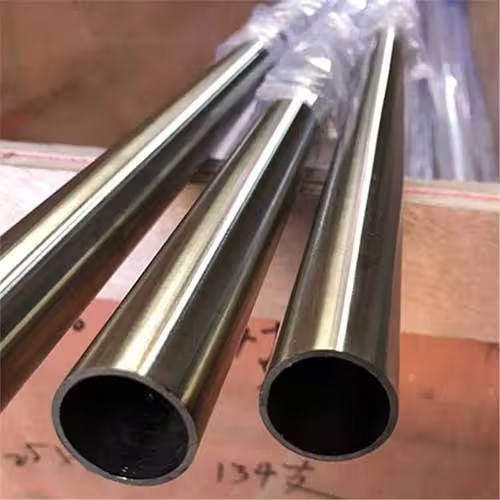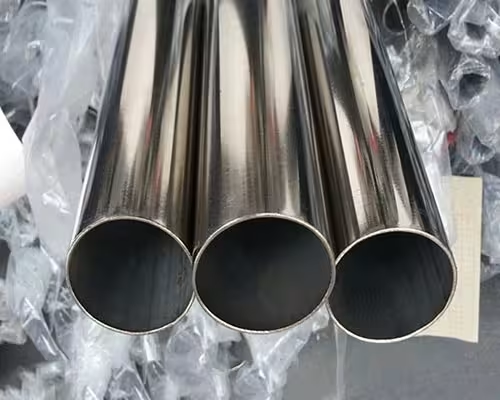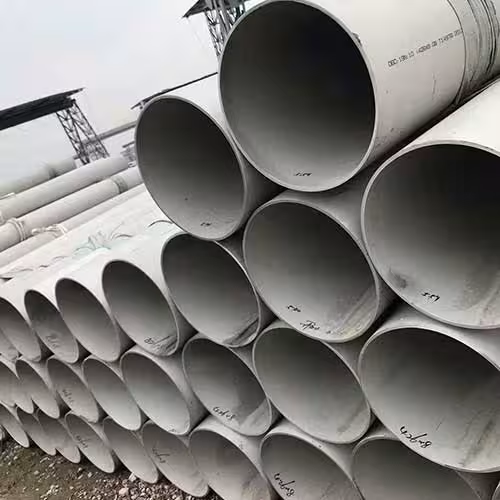Welcome to My Blog!
Before we dive into the content, I’d love for you to join me on my social media platforms where I share more insights, engage with the community, and post updates. Here’s how you can connect with me:
Facebook:https://www.facebook.com/profile.php?id=61565500692293
Now, let’s get started on our journey together. I hope you find the content here insightful, engaging, and valuable.
Table of Contents
Introduction

When it comes to constructing a piping system, whether for industrial or residential use, selecting the right stainless steel pipe diameters is essential. The diameter of stainless steel pipes plays a crucial role in ensuring the system’s efficiency, safety, and longevity. If you are tasked with designing or selecting a piping system, understanding how to choose the right pipe diameter is key to achieving optimal performance. This article will explore the factors influencing the selection of stainless steel pipe diameters and provide guidance on how to make the right decision for your specific application.
Understanding Stainless Steel Pipe Diameters
What Are Stainless Steel Pipe Diameters?
Stainless steel pipe diameters refer to the size of the pipes, typically measured in terms of their internal or external diameter. The diameter directly impacts the flow rate of liquids or gases within the pipe, the pipe’s ability to withstand pressure, and its overall structural integrity. The two main types of diameters you will encounter are:
- Nominal Pipe Size (NPS): This is a standardized measurement used primarily in the United States. The nominal size refers to the pipe’s internal diameter in inches but may differ from the actual dimensions.
- Outer Diameter (OD): This refers to the actual outer measurement of the pipe. It’s a key factor in selecting fittings, flanges, and connections.
When selecting stainless steel pipes, you will typically encounter both NPS and OD measurements. Understanding how these diameters impact your project is vital for achieving the correct pipe dimensions.
Why Does Stainless Steel Pipe Diameter Matter?
Choosing the correct stainless steel pipe diameters is critical for several reasons:
- Flow Rate: The diameter directly affects the flow rate of fluids or gases in the pipe. A larger diameter allows for higher flow rates, while a smaller diameter restricts flow.
- Pressure Requirements: Depending on the system’s pressure requirements, the pipe diameter must be chosen accordingly to avoid pressure loss or burst pipes.
- Cost Efficiency: Opting for the correct size can help avoid unnecessary expenses associated with over-engineering a piping system.
- Material Strength: Stainless steel pipes come in various grades, and their diameter affects their load-bearing capacity and suitability for different applications.
Key Factors to Consider When Choosing Stainless Steel Pipe Diameters


Flow Rate and Capacity
The primary factor in determining the required diameter for stainless steel pipes is the flow rate of the fluid or gas being transported. A higher flow rate demands a larger diameter pipe. It’s important to calculate the required flow rate based on the specific application, whether it’s for water, oil, air, or other fluids.
To determine the flow rate, you can use the Darcy-Weisbach equation or consult with an engineer to ensure that the pipe diameter matches the system’s requirements. It’s also important to consider the friction losses in the pipe, as they can impact the overall flow efficiency.
Pressure and Temperature Requirements
The pressure and temperature conditions of the piping system also influence the diameter. Higher pressure systems require thicker walls and larger diameters to handle the increased load. Similarly, pipes used in high-temperature applications may need to be larger to prevent overheating and to ensure that they can handle thermal expansion.
For example, steam or high-pressure fluid pipelines may require larger diameters and thicker-walled stainless steel pipes to ensure they meet operational demands without risk of rupture or deformation.
Type of Fluid or Gas
The nature of the fluid or gas being transported plays a role in selecting the correct diameter. For example, viscous liquids like oil or chemicals will require a different diameter than a system used for gases or water. Thicker fluids have a higher resistance to flow, meaning you may need a larger pipe diameter to maintain the same flow rate.
Additionally, corrosive substances might require specific grades of stainless steel (e.g., 316 stainless steel) and influence the diameter selection based on durability and resistance to corrosion.
Pipe Length and Layout
The length and layout of your piping system also affect the required diameter. Longer pipes will experience greater friction loss, requiring a larger diameter to maintain an optimal flow rate. The layout, including the number of bends, joints, and valves, can increase resistance and may necessitate a larger pipe diameter to compensate for these losses.
Compliance with Industry Standards
Many industries, especially those in the oil and gas, pharmaceutical, and food processing sectors, must comply with strict standards and codes when designing piping systems. These standards often dictate the appropriate pipe diameters and material specifications to ensure safety and efficiency.
For example, the American National Standards Institute (ANSI) and the American Society of Mechanical Engineers (ASME) provide guidelines for pipe sizing that must be adhered to in industrial applications.
How to Calculate the Required Stainless Steel Pipe Diameter
Calculate the Flow Rate
The first step in calculating the required pipe diameter is determining the flow rate of the fluid or gas that will pass through the pipe. The flow rate is typically expressed in gallons per minute (GPM) or liters per second (L/s).
Use Flow Formulas
Once you have the flow rate, use fluid dynamics formulas like the Darcy-Weisbach equation to calculate the pipe diameter. For simple applications, you can use online pipe sizing calculators, which simplify this process.
Account for Pressure Drop
Ensure that the chosen diameter will allow for an acceptable pressure drop over the length of the pipe. A large pressure drop can affect the overall system efficiency. Tools like the Hazen-Williams equation help determine the pressure drop and guide you in selecting the optimal diameter.
Consider Pipe Fittings
Don’t forget to consider pipe fittings, such as elbows, tees, and valves, when calculating the total pressure drop and flow efficiency. These elements can contribute to friction losses and may influence the final pipe diameter choice.
Table: Comparison of Pipe Sizes and Applications

| Pipe Diameter (inches) | Common Applications | Flow Rate (GPM) | Pressure Requirements |
|---|---|---|---|
| 1-2 | Residential plumbing, small fluid transport | 10-50 | Low to medium pressure |
| 3-4 | Commercial buildings, small industrial uses | 50-200 | Medium pressure |
| 6-8 | Large industrial applications, water supply | 200-500 | High pressure |
| 10-12 | Oil & gas pipelines, chemical plants | 500-1000 | Very high pressure |
This table provides a general guide to the common pipe sizes used for different applications. Depending on the exact requirements of your system, the ideal stainless steel pipe diameter may vary.
Conclusion
Selecting the right stainless steel pipe diameters is a critical aspect of designing an efficient and reliable piping system. Factors such as flow rate, pressure and temperature requirements, and the nature of the fluid being transported all influence the diameter selection. By carefully considering these elements, you can ensure that your piping system meets operational demands without incurring unnecessary costs or risks.
Remember to consult with engineers or use proper calculation methods to determine the correct pipe diameter for your specific application. Making the right decision will improve system efficiency, reduce operational issues, and contribute to the long-term success of your piping infrastructure.
FAQ
How do I know which stainless steel pipe diameter to choose?
To choose the correct diameter, consider factors such as the flow rate, pressure, temperature, and type of fluid being transported. Calculating the flow rate and using appropriate formulas for pressure drop and friction loss can guide you in selecting the right size.
Can I use a smaller diameter pipe to reduce costs?
While smaller diameters can reduce upfront costs, they may lead to inefficient flow rates and increased pressure loss over time. It is essential to balance cost savings with performance to avoid future operational issues.
Are there any industry standards for stainless steel pipe diameters?
Yes, many industries follow standards set by organizations like ANSI, ASME, and ASTM. These guidelines ensure that the selected pipe diameters meet safety, performance, and durability requirements for specific applications.
What should I consider when upgrading an existing piping system?
When upgrading, consider the flow rate requirements, system pressure, and any changes in fluid or gas properties. The new pipe diameter should meet the operational demands without compromising efficiency.
How often should I check and maintain my stainless steel pipes?
Regular maintenance is essential to ensure that the pipes maintain optimal performance. Periodic inspections for corrosion, wear, and leaks can help identify issues early, especially for high-pressure or high-temperature systems.

